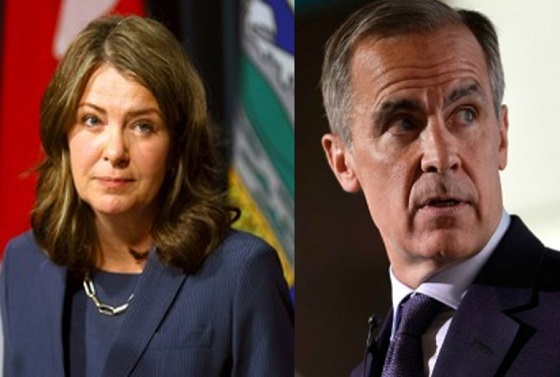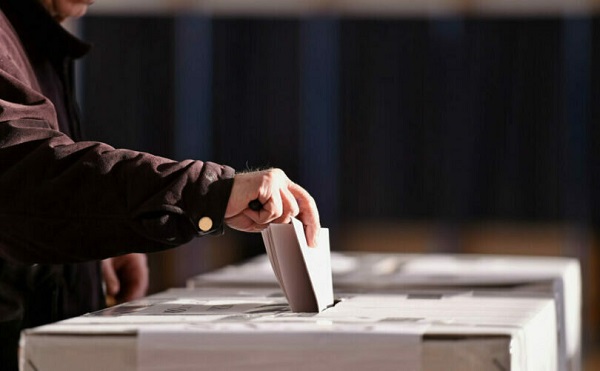Alberta
Province freezes funds for doctors and launches process to work out a new funding formula

New physician funding framework announce
Alberta will maintain physician funding at $5.4 billion, the highest level ever, and implement its final offer to the Alberta Medical Association (AMA) to avoid $2 billion in cost overruns.
Existing terms will remain in place until March 31, 2020. A new funding framework will then be introduced, in a multi-year process that will require consultation with the AMA at all stages. The new framework will make changes proposed during negotiations to prevent cost overruns, align benefit programs and administrative fees with those of comparable provinces, and improve services for patients.
The eleven consultation proposals will also be implemented on March 31. This includes phasing in changes to complex modifiers, reducing the rate physicians can charge for this billing code to $9 from $18, for a period of one year before the code is removed in 2021-22. In summer 2020, at the direction of the Minister of Health, the Government of Alberta will also introduce a new alternative relationship plan (ARP) with built-in transition benefits to encourage physicians to move from fee-for-service to a three-year contract.
“Our province is facing cost overruns of $2 billion in the next three years due solely to physician compensation. If left unaddressed, these costs would impede efforts to reduce surgical wait times, improve mental health and addiction services, and expand the number of continuing care beds. Despite repeated efforts, the AMA failed to put forward alternatives that would hold the line on physician compensation. The new framework announced today will prevent cost overruns, allow our province to improve services for patients, and still ensure that Alberta’s doctors are amongst the highest paid physicians in all of Canada.”
Background
- The new funding framework will maintain government’s current level of spending on physicians at $5.4 billion.
- The new funding framework avoids anticipated cost overruns of $2 billion over the next three years.
- Alberta has been spending more on physician salaries than other provinces, yet most of its health outcomes are below national averages.
- A doctor in Alberta earns approximately $90,000 more than a doctor in Ontario and physicians’ fees have almost tripled since 2002.
Elements of the new funding framework
- Changes to Alberta’s complex modifier billing system. The rate physicians are able to charge for complex modifiers will be reduced to $9 from $18 for a period of one year before this billing code is removed in 2021-22. Once the new framework is fully phased in, physicians will be able to bill an additional fee after spending 25 minutes with a complex patient case. Alberta remains the only province in Canada that allows for a top-up payment for complex visits.
- Removal of the comprehensive annual care plan from the list of insured services. Currently, physicians can also bill for a similar consultation called a comprehensive annual visit. No other province in Canada compensates physicians twice for annual care consultation.
- Implementation of a new daily cap, modelled after a cap in place in British Columbia, of 65 patients per day. Large patient loads can contribute to physician burnout and may compromise patient safety and quality of care.
- Removing physician overhead subsidies from all hospital-based services. Physicians who work in AHS facilities should not be billing for overhead costs that their community physician colleagues face, such as leases, hiring staff and purchasing equipment.
- Ending of clinical payments, or stipends, by AHS to physicians. This change ends duplication of payments to contracted physicians.
Timeline
- In September 2019, government provided notice to the AMA that it intended to begin negotiations on the AMA Agreement. The notification provided time for the AMA to prepare its proposals.
- In November 2019, negotiations began with the AMA to reach a new agreement; government began consultations on 11 proposed changes to the schedule of medical benefits (SOMB, or “insured services”).
- In January 2020, negotiations and consultations proceeded with no agreement reached. Mediation, on both the negotiation and consultation proposals, began January 31 and continued into February.
- The parties were not able to reach an agreement during mediation.
- Government will implement its final offer from the negotiating table, including the 11 consultation proposals, on March 31.
Alberta
Alberta Next Panel calls for less Ottawa—and it could pay off

From the Fraser Institute
By Tegan Hill
Last Friday, less than a week before Christmas, the Smith government quietly released the final report from its Alberta Next Panel, which assessed Alberta’s role in Canada. Among other things, the panel recommends that the federal government transfer some of its tax revenue to provincial governments so they can assume more control over the delivery of provincial services. Based on Canada’s experience in the 1990s, this plan could deliver real benefits for Albertans and all Canadians.
Federations such as Canada typically work best when governments stick to their constitutional lanes. Indeed, one of the benefits of being a federalist country is that different levels of government assume responsibility for programs they’re best suited to deliver. For example, it’s logical that the federal government handle national defence, while provincial governments are typically best positioned to understand and address the unique health-care and education needs of their citizens.
But there’s currently a mismatch between the share of taxes the provinces collect and the cost of delivering provincial responsibilities (e.g. health care, education, childcare, and social services). As such, Ottawa uses transfers—including the Canada Health Transfer (CHT)—to financially support the provinces in their areas of responsibility. But these funds come with conditions.
Consider health care. To receive CHT payments from Ottawa, provinces must abide by the Canada Health Act, which effectively prevents the provinces from experimenting with new ways of delivering and financing health care—including policies that are successful in other universal health-care countries. Given Canada’s health-care system is one of the developed world’s most expensive universal systems, yet Canadians face some of the longest wait times for physicians and worst access to medical technology (e.g. MRIs) and hospital beds, these restrictions limit badly needed innovation and hurt patients.
To give the provinces more flexibility, the Alberta Next Panel suggests the federal government shift tax points (and transfer GST) to the provinces to better align provincial revenues with provincial responsibilities while eliminating “strings” attached to such federal transfers. In other words, Ottawa would transfer a portion of its tax revenues from the federal income tax and federal sales tax to the provincial government so they have funds to experiment with what works best for their citizens, without conditions on how that money can be used.
According to the Alberta Next Panel poll, at least in Alberta, a majority of citizens support this type of provincial autonomy in delivering provincial programs—and again, it’s paid off before.
In the 1990s, amid a fiscal crisis (greater in scale, but not dissimilar to the one Ottawa faces today), the federal government reduced welfare and social assistance transfers to the provinces while simultaneously removing most of the “strings” attached to these dollars. These reforms allowed the provinces to introduce work incentives, for example, which would have previously triggered a reduction in federal transfers. The change to federal transfers sparked a wave of reforms as the provinces experimented with new ways to improve their welfare programs, and ultimately led to significant innovation that reduced welfare dependency from a high of 3.1 million in 1994 to a low of 1.6 million in 2008, while also reducing government spending on social assistance.
The Smith government’s Alberta Next Panel wants the federal government to transfer some of its tax revenues to the provinces and reduce restrictions on provincial program delivery. As Canada’s experience in the 1990s shows, this could spur real innovation that ultimately improves services for Albertans and all Canadians.
Alberta
Alberta Next Panel calls to reform how Canada works

From the Fraser Institute
By Tegan Hill
The Alberta Next Panel, tasked with advising the Smith government on how the province can better protect its interests and defend its economy, has officially released its report. Two of its key recommendations—to hold a referendum on Alberta leaving the Canada Pension Plan, and to create a commission to review programs like equalization—could lead to meaningful changes to Canada’s system of fiscal federalism (i.e. the financial relationship between Ottawa and the provinces).
The panel stemmed from a growing sense of unfairness in Alberta. From 2007 to 2022, Albertans’ net contribution to federal finances (total federal taxes paid by Albertans minus federal money spent or transferred to Albertans) was $244.6 billion—more than five times the net contribution from British Columbians or Ontarians (the only other two net contributors). This money from Albertans helps keep taxes lower and fund government services in other provinces. Yet Ottawa continues to impose federal regulations, which disproportionately and negatively impact Alberta’s energy industry.
Albertans were growing tired of this unbalanced relationship. According to a poll by the Angus Reid Institute, nearly half of Albertans believe they get a “raw deal”—that is, they give more than they get—being part of Canada. The Alberta Next Panel survey found that 59 per cent of Albertans believe the federal transfer and equalization system is unfair to Alberta. And a ThinkHQ survey found that more than seven in 10 Albertans feel that federal policies over the past several years hurt their quality of life.
As part of an effort to increase provincial autonomy, amid these frustrations, the panel recommends the Alberta government hold a referendum on leaving the Canada Pension Plan (CPP) and establishing its own provincial pension plan.
Albertans typically have higher average incomes and a younger population than the rest of the country, which means they could pay a lower contribution rate under a provincial pension plan while receiving the same level of benefits as the CPP. (These demographic and economic factors are also why Albertans currently make such a large net contribution to the CPP).
The savings from paying a lower contribution rate could result in materially higher income during retirement for Albertans if they’re invested in a private account. One report found that if a typical Albertan invested the savings from paying a lower contribution rate to a provincial pension plan, they could benefit from $189,773 (pre-tax) in additional retirement income.
Clearly, Albertans could see a financial benefit from leaving the CPP, but there are many factors to consider. The government plans to present a detailed report including how the funds would be managed, contribution rates, and implementation plan prior to a referendum.
Then there’s equalization—a program fraught with flaws. The goal of equalization is to ensure provinces can provide reasonably comparable public services at reasonably comparable tax rates. Ottawa collects taxes from Canadians across the country and then redistributes that money to “have not” provinces. In 2026/27, equalization payments is expected to total $27.2 billion with all provinces except Alberta, British Columbia and Saskatchewan receiving payments.
Reasonable people can disagree on whether or not they support the principle of the program, but again, it has major flaws that just don’t make sense. Consider the fixed growth rate rule, which mandates that total equalization payments grow each year even when the income differences between recipient and non-recipient provinces narrows. That means Albertans continue paying for a growing program, even when such growth isn’t required to meet the program’s stated objective. The panel recommends that Alberta take a leading role in working with other provinces and the federal government to reform equalization and set up a new Canada Fiscal Commission to review fiscal federalism more broadly.
The Alberta Next Panel is calling for changes to fiscal federalism. Reforms to equalization are clearly needed—and it’s worth exploring the potential of an Alberta pension plan. Indeed, both of these changes could deliver benefits.
-

 Digital ID1 day ago
Digital ID1 day agoCanadian government launches trial version of digital ID for certain licenses, permits
-

 Alberta1 day ago
Alberta1 day agoAlberta Next Panel calls to reform how Canada works
-

 Agriculture2 days ago
Agriculture2 days agoEnd Supply Management—For the Sake of Canadian Consumers
-

 International1 day ago
International1 day agoGeorgia county admits illegally certifying 315k ballots in 2020 presidential election
-

 Business1 day ago
Business1 day agoThe “Disruptor-in-Chief” places Canada in the crosshairs
-

 Artificial Intelligence1 day ago
Artificial Intelligence1 day agoUK Police Pilot AI System to Track “Suspicious” Driver Journeys
-

 Energy1 day ago
Energy1 day ago‘The electric story is over’
-

 International1 day ago
International1 day agoWorld-leading biochemist debunks evolutionary theory







